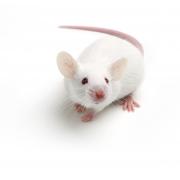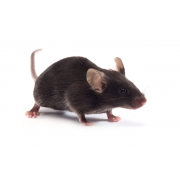Genetic Quality Control of inbred and F1 hybrid rodent strains
Genetically defined inbred and F1 hybrid strains are frequently the models of choice for research because of their unique and stable phenotypic traits, and hence, uniform and predictable experimental responses. The genetic attributes that underpin these desirable qualities are the homozygosity that results from brother-sister mating and isogenicity, i.e., that individuals of an inbred or F1 hybrid strain are essentially the same genetically. The loss of these properties is termed substrain (or subline) divergence, the most significant cause of which is the genetic contamination that occurs when one strain is unintentionally outcrossed to another; also contributing to subline divergence are the residual heterozygosity that exists and the mutations that accumulate when a strain is separated into subpopulations. The Charles River Inbred Genetic QC Program comprises: (1) rigorous colony management practices to prevent, limit and detect subline divergence and (2) routine genetic monitoring to verify that genetic contamination has not occurred.
Colony management of inbred strains
Colony management for inbred rodent strains includes a pyramidal, multi-colony structure and the maintenance of detailed breeding records. At the apex of the pyramid is the foundation colony, which is sustained by brother x sister mating, with pedigree records of all matings. Foundation colonies, housed in isolators at the Charles River facility in Wilmington, MA, are the source of founder breeders for the brother x sister mated, pedigreed nucleus colonies in barrier rooms. Foundation breeders are reintroduced to each barrier room nucleus colony every three to five years (within 10 generations) to control genetic drift. The nucleus provides breeders to an optional expansion colony or directly to the production colony. All expansion colony matings are between siblings, but pedigree records are not kept. The nucleus and expansion colonies are the source of all production colony breeders, which are randomly mated. An important aspect of this scheme is that all breeders are the offspring of brother x sister matings. This increases the likelihood that new recessive alleles, possibly originating from an unintentional outcross, will recombine and recessive phenotypes, e.g., albino, brown and non-agouti coat colors, will be observed. Production records and observations made by animal care technicians are the front line for detection of genetic contamination. For example, an increase in litter size may be an indication of heterosis, or hybrid vigor, due to genetic contamination, as might a coat color change.
.png)
Genetic monitoring of inbred strains
As genetic contamination is often inapparent, genetic monitoring of qualitative genetic markers is required to verify the authenticity of inbred and F1 hybrid strains. In association with advances in molecular genetics, the phenotypic biochemical and immunologic protein markers, once the mainstay of genetic monitoring, have been supplanted at Charles River and elsewhere by gene sequence polymorphisms, including variations in the number of tandem repeats in mini- and microsatellite DNA, and most recently, single nucleotide polymorphisms (SNPs) found in large numbers across the genome. Irrespective of type, qualitative markers for genetic monitoring are chosen to be distributed across the species genome and to distinguish among common research models, particularly co-located strains and stocks that are probable sources of genetic contamination. The allelic profiles generated by genetic monitoring are compared to established strain profiles; deviation from the established profile is indicative of genetic contamination and can provide clues as to the contamination source(s). B. The Charles River Program The Charles River mouse and rat panels for genetic monitoring each consist of 32 SNP loci on the autosomal and X chromosomes. The SNPs in these limited panels were chosen to differentiate strains rather than substrains and hence to detect genetic contamination rather than drift. SNP genotyping is performed by endpoint fluorogenic nuclease polymerase chain reaction (PCR) assays in a microarray platform (TaqMan® OpenArray®, Thermo Fisher). Each SNP has two alleles, i.e., is dimorphic. One allele is identified with a complementary oligonucleotide probe labeled with the fluorescent dye FAM. The probe complementary to the other allele is labeled with the fluorescent dye VIC. Therefore, genotypes are reported as F F or V V for homozygotes and V F for heterozygotes. As shown in the following tables of selected allelic profiles, inbred strains are homozygous at each SNP marker, whereas F1 hybrids are heterozygous at SNPs where the parental genotypes differ. Genetic monitoring of each (mouse and rat) strain in every Charles River room is carried out once per quarter on at least five inbred nucleus and an equal number of expansion or production colony animals, and on at least 15 F1 hybrid offspring or parental breeders. When the occurrence of a genetic contamination has been confirmed, customers are immediately notified and the contaminated colony is depopulated.





